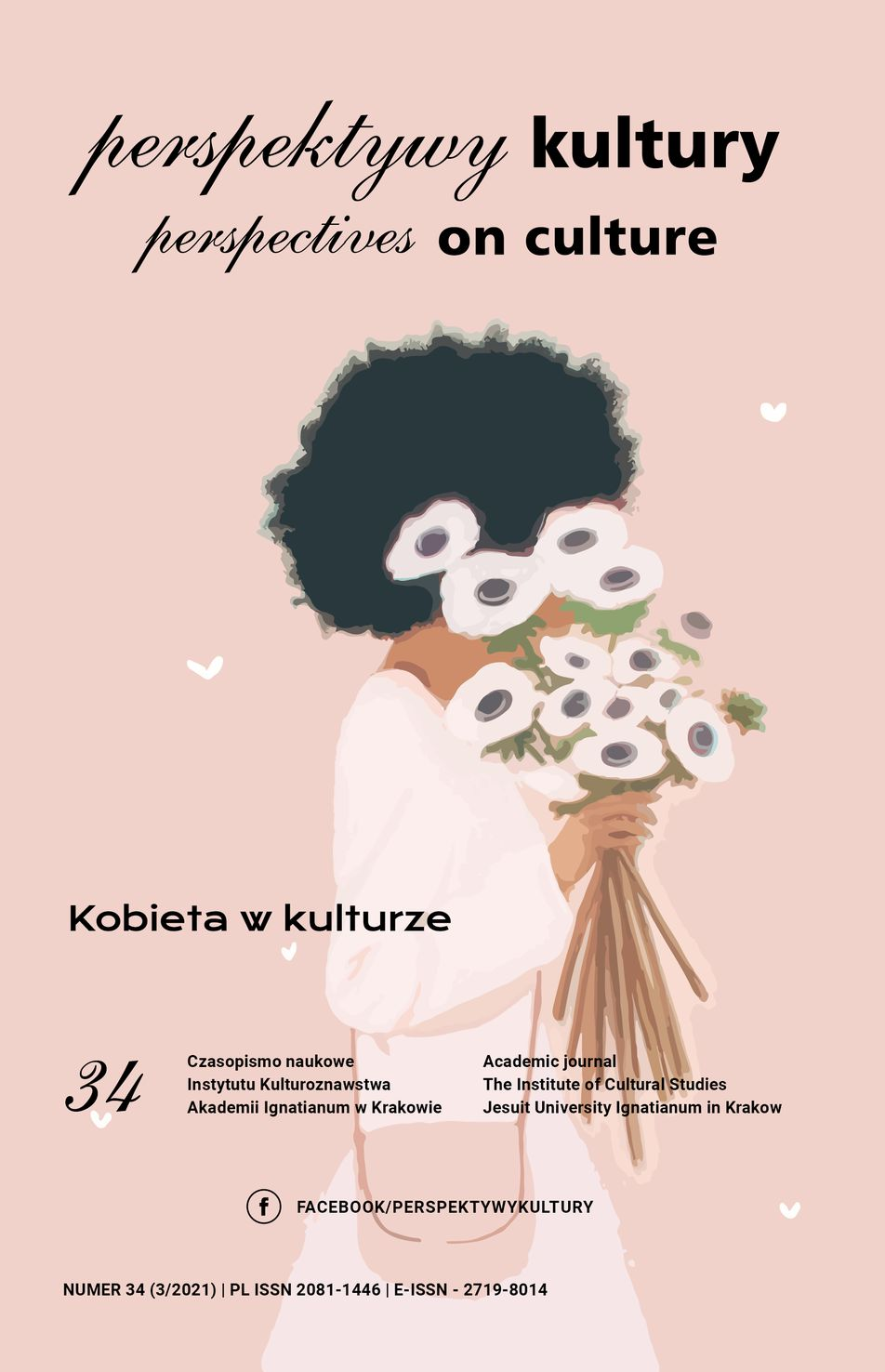Echoes of Goya in Graphic Images of Social and Political Conflict
Abstract
Witnesses of critical events who record them in real-time with images do not have the opportunity to concentrate on the form of such works. Only when returning to the memories, in later projects, do they focus on the artistic components. In an immediate sketch and an elaborated image, the truth of the witnessed events can be emphasized by employing the artistic tradition, which is why drawings made by observers of social and political unrest often refer to the work of Francisco Goya. The article presents the characteristics of the Spanish master’s graphics and gives examples of works from different periods which show links with his artistic language.
References
Balcerzak, G., Kitowska-Łysiak, M. i Tomczak, R. (red.). (2003). Sztuka „zaangażowana” – mity i szanse. Materiały seminaryjne. Gorzów Wlkp. – Gościkowo/Paradyż: Muzeum Lubuskie im. Jana Dekerta.
Bookbinder, J. (2005). Boston Modern. Figurative Expressionism as Alternative Modernism. New Hampshire: University Press of New England.
Brown, M. (2009). Paula Rego interview. The Telegraph. Pozyskano z: https:// www.telegraph.co.uk/culture/art/6469383/Paula-Rego-interview.html (dostęp: 29.08.2020).
Dałek, J. i Świebocka, T. (1989). Cierpienie i nadzieja. Twórczość plastyczna więźniów obozu oświęcimskiego. Katowice: Krajowa Agencja Wydawnicza. Deyries-Henry, D. (2007). Collection art moderne – La collection du Centre Pompidou, Musée national d’art moderne. Prow. B. Leal. Paris: Centre Pompidou. Pozyskano z: https://www.centrepompidou.fr/cpv/resource/c978qX/rrgaGx9 (dostęp: 25.01.2020).
Dillon, C. (2014). Mabel Dwight’s Danse Macabre. W: The Left Front. Radical Art in the “Red Decade,” 1929–1940. Evanston, IL: Mary and Leigh Block Museum of Art Northwestern University.
Francisco José de Goya y Lucientes. Graphic masterpieces from a private collection. (2014). Christies, New York, 28.01.2014. Pozyskano z: https:// www.christies.com/en/auction/francisco-jos-de-goya-y-lucientes-graphic-masterpieces-from-a-private-collection-24362/browse-lots (dostęp: 25.01.2020).
Fucile, R. (2019). Fosa Común. edycja własna.
Haskell, B. (1999). The American Century. Art & Culture. New York: Whitney Museum of American Art.
Hicks, A. (1989). New British Art in the Saatchi Collection. London: Thames & Hudson Ltd.
Hughes, R. (2004). Francisco Goya. New York: Alfred A. Knopf.
Jerman, M. (red.). (1997). Umetniki eksistence: Zoran Mušič, Marij Pregelj, Gabrijel Stupica, Janez Bernik. Liubljana: Galerija Tivoli, International Centre of Graphic Arts.
Jones, J. (2003). Look what we did. The Guardian, 31.03.2003. Pozyskano z: https://www.theguardian.com/culture/2003/mar/31/artsfeatures.turnerprize2003 (dostęp: 25.01.2020).
Kolekcja poruszających rysunków byłego więźnia Jerzego Zielezińskiego w Zbiorach Miejsca Pamięci. Pozyskano z: http://auschwitz.org/muzeum/aktualnosci/kolekcja-poruszajacych-rysunkow-bylego-wieznia-jerzego-zielezinskiego-w-zbiorach-miejsca-pamieci,2057.html (dostęp: 25.12.2019).
Kramer, H. (1955). On the Horizon: Bloom and Levine: The Hazards of Modern Painting. Commentary. Pozyskano z: https://www.commentarymagazine.com/articles/hilton-kramer-2/on-the-horizon-bloom-and-levine-the-hazards-of-modern-painting/ (dostęp: 20.02.2021).
Kreitner, R. (2016). Let’s Not Forget Socialism in the Resurrection of Socialist Art. The Nation, 12.05.2016. Pozyskano z: https://www.thenation.com/ article/william-gropper-resurrection-of-socialist-art/ (dostęp: 20.01.2020). Król, A. (2016). Fenomen WPROST. W: A. Król i J. Waltoś (red.), WPROST 1966–1986 Kraków: Manggha.
Linares, M. (2017). Francisco José de Goya y Lucientes. Spain: Könemann.
Mayor, A.H. (1974). Goya: 67 Drawings. New York: Metropolitan Museum of Art.
Mengham, R. (red.). (2010). In the Realm of the Senseless, Jake and Dinos Chapman. Wystawa w Galerii Rondo Sztuki. Tłum. G. Kozłowski. Katowice: Instytut Kultury Ars Cameralis Silesiae Superioris.
Milewski, C. (b.r.). William Gropper: The Capriccios Suite. Pozyskano z: https:// artcollection.wayne.edu/william-gropper (dostęp: 20.02.2021).
Prelinger, E. (1992). Käthe Kollwitz. Washington: National Gallery of Art, New Haven and London: Yale University Press.
Rebieh, A.A. (2018). Traces. Pozyskano z: https://rmeilgallery.squarespace. com/azza-abo-rebieh (dostęp: 24.01.2020).
Scheller, W.G. (2008). America. A history in art. New York: Black Dog & Leventhal Publishers.
Sieradzka, A. (2016). Lagermuseum. Muzeum obozowe w KL Auschwitz. Kraków: Universitas.
Sieradzka, A. (2017). Twarzą w twarz. Sztuka w Auschwitz. Muzeum Narodowe w Krakowie, Państwowe Muzeum Auschwitz-Birkenau.
Sinjab, L. i Barnard, A. (2018). Syria’s Women Prisoners, Drawn by an Artist Who Was One. The New York Times, 7.08.2018. Pozyskano z: https://www. nytimes.com/2018/08/07/arts/design/syria-prison-artist.html (dostęp: 28.01.2020).
Stangret, L. (2015). Tadeusz Kantor. Drawing. Tłum. F. Sady. Warszawa: Fundacja im. Tadeusza Kantora, Adam Mickiewicz Institute, Culture.pl.
Szczerski, A. (2018). Transformacja. Sztuka w Europie Środkowo-Wschodniej po 1989 roku. Kraków: Wydawnictwo Uniwersytetu Jagiellońskiego.
Szewczuk, M. (red.). (1995). Mistrzowie rysunku: Rysunki polskich artystów z kolekcji Muzeum Sztuki Współczesnej w Radomiu. Radom: Muzeum Okręgowe im. Jacka Malczewskiego w Radomiu.
Triantafyllou, S. i Kanakari A.T. (red.). (2015). Elles. Tłum. T. Moser. Athens: Frissiras Museum.
van Bergen, L., de Mare, H. i Meijman, F.J. (2010). From Goya to Afghanistan – an essay on the ratio and ethics of medical war pictures. Medicine, Conflict and Survival, t. 26, nr 2, 124–144. DOI: 10.1080/13623699.2010.491386.
Voermann, I. (red. prow.). (2012). Otto Dix and the New Objectivity. Ostfildern: Hatje Cantz; Stuttgart: Staatliche Akademie der Bildenden Künste; Stuttgart: Kunstmuseum.
Waltoś, J. (2016). Czym miało być WPROST?. W: A. Król i J. Waltoś (red.), WPROST 1966–1986. Kraków: Manggha.
Wieseman, E. (2018). Paula Rego: ‘It isn’t nice in my mind’. The Guardian. Pozyskano z: https://www.theguardian.com/artanddesign/2018/nov/11/ paula-rego-it-isnt-nice-in-my-mind (dostęp: 20.01.2020).
http://www.rodolfofucile.com.ar (dostęp: 20.01.2020).
Copyright (c) 2021 Jesuit University Ignatianum in Krakow

This work is licensed under a Creative Commons Attribution-NoDerivatives 4.0 International License.
Autor, zgłaszając swój artykuł, wyraża zgodę na korzystanie przez Wydawnictwo Uniwersystet Ignatianum z utworu na następujących polach eksploatacji:
- utrwalania utworu w formie papierowej, a także na nośniku cyfrowym lub magnetycznym;
- zwielokrotnienia utworu dowolną techniką, bez ograniczenia ilości wydań i liczby egzemplarzy;
- rozpowszechniania utworu i jego zwielokrotnionych egzemplarzy na jakimkolwiek nośniku, w tym wprowadzenia do obrotu, sprzedaży, użyczenia, najmu;
- wprowadzenia utworu do pamięci komputera;
- rozpowszechniania utworu w sieciach informatycznych, w tym w sieci Internet;
- publicznego wykonania, wystawienia, wyświetlenia, odtworzenia oraz nadawania i reemitowania, a także publicznego udostępniania utworu w taki sposób, aby każdy mógł mieć do niego dostęp w miejscu i czasie przez siebie wybranym.
Wydawca zobowiązuje się szanować osobiste prawa autorskie do utworu.





